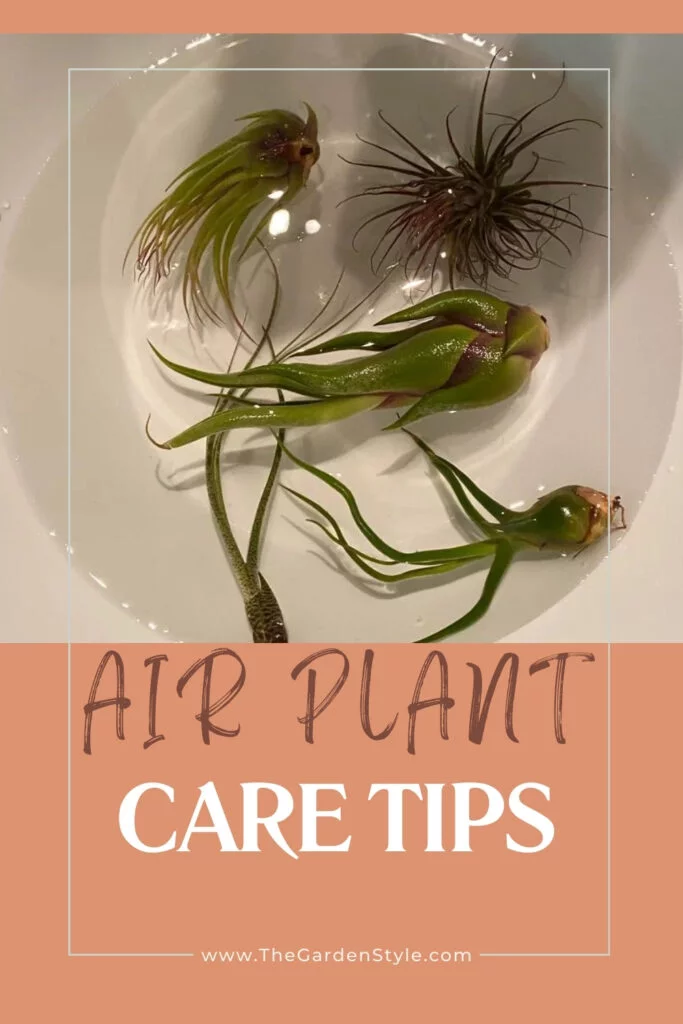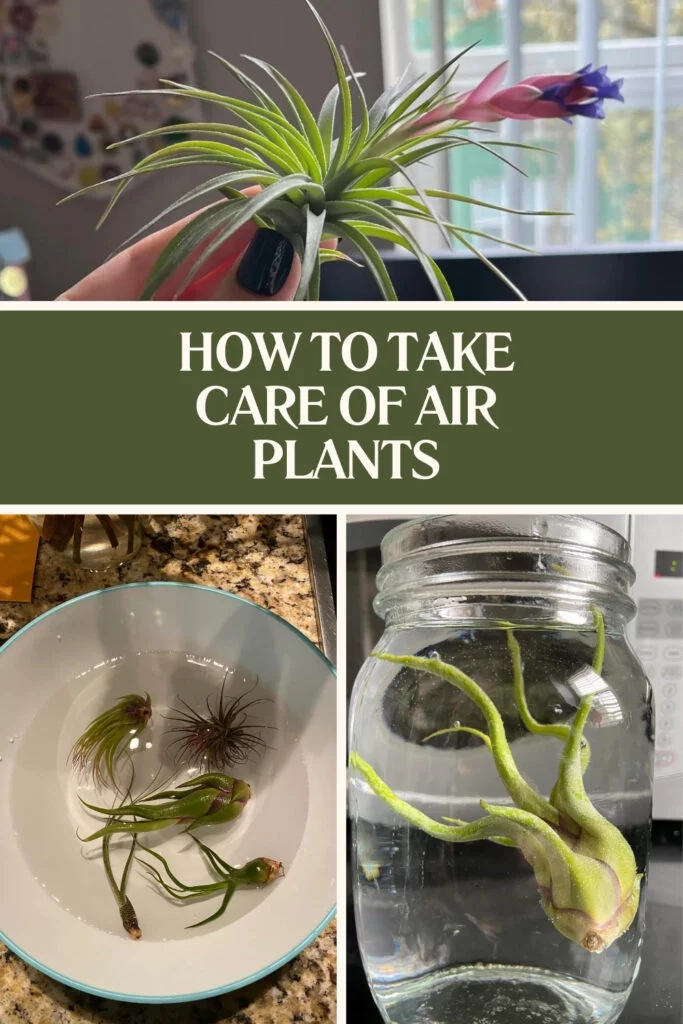Air plants are unique and beautiful plants that can add a touch of greenery to any space. They are easy to care for and require minimal maintenance. From the perfect lighting conditions to watering and from the ideal temperature and humidity to the magic touch of fertilizer, we’ve got you covered. This guide will arm you with all the knowledge you need to become a confident air plant caregiver. Here is a beginner’s guide on how to take care of air plants.
Table of Contents
What Are Air Plants?
Air plants, which you might hear referred to by their botanical name, Tillandsia, are remarkable and intriguing plants that have piqued the interest of plant lovers worldwide. What sets them apart from most other greenery we commonly encounter is their lack of need for soil to grow. Instead, they pull moisture and nutrients from the air through their leaves, a trait that gave rise to their catchy common name.
Native to the forests, mountains, and deserts of southern U.S., Central and South America, air plants belong to the bromeliad family. They are epiphytes, meaning they naturally grow on other plants, typically trees, without drawing nourishment from their hosts. Instead, they use their roots only to anchor themselves in place, making them a non-parasitic plant.
Tillandsia species come in an astounding variety, with over 650 types known to exist. Each type boasts a unique shape, size, and color, ranging from silvery-green to deep purple hues. Many air plants produce vibrant blooms.
Their minimal root system and soil-free lifestyle make air plants incredibly versatile and popular for modern decor. You can display and arrange them in a myriad of ways: mounted on pieces of driftwood or bark, nestled in shells, suspended from the ceiling, or simply placed atop a desk or shelf. Their ability to adapt to a range of environments aligns neatly with contemporary aesthetics and lifestyles, making air plants a chic and easy-care choice for bringing a touch of nature indoors.
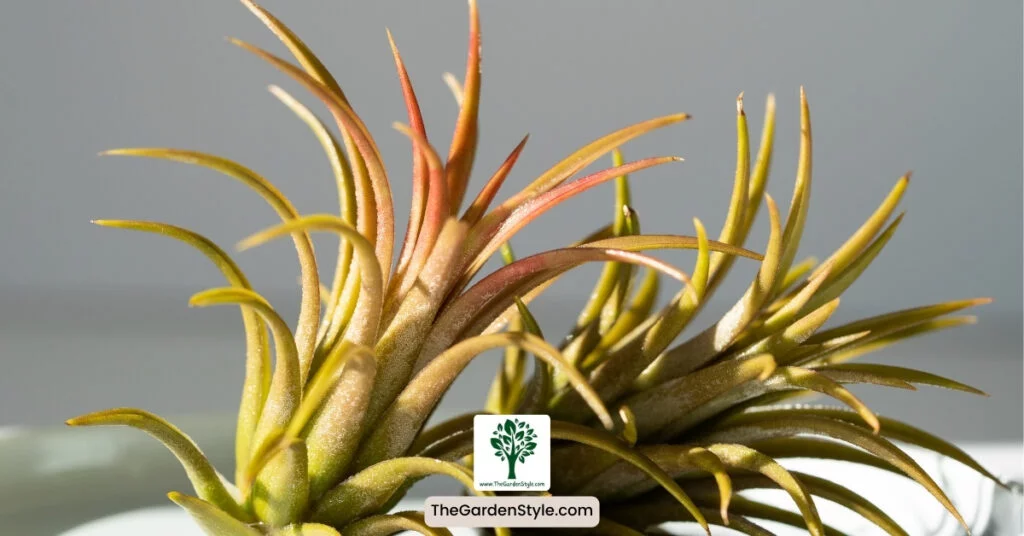
Air Plant Care
Unlike traditional plants, air plants don’t require soil to thrive, making them an exciting addition to any plant enthusiast’s collection. In this guide, we’ll explore the ins and outs of air plant care. We’ll shed light on the right amount of light for air plants to bask in, the art of watering these soilless wonders, the ideal temperature and humidity to keep them happy, and even how to nourish them with the perfect fertilizer. Continue reading for a comprehensive guide on the care of air plants.
Light for Air Plants
In their natural habitat, air plants often grow under the dappled shade of trees, which means they are accustomed to bright, indirect light. Indoors, we emulate these conditions by placing them near a window that receives plenty of natural light throughout the day but not under the harsh glare of direct sunlight, which can scorch their delicate leaves.
East or west-facing windows typically provide the ideal intensity of sunshine for air plants. If such lighting conditions are not available, fear not – these hardy little plants can also flourish under artificial light sources. Fluorescent or full-spectrum bulbs can be a great substitute for natural sunlight, particularly in office environments or rooms with minimal windows.
It’s important to monitor your air plants and observe any changes in their appearance. If the leaves start to fade or burn, it may indicate too much direct sunlight, while elongated leaves or a darker green color can signify a need for more light. Adjustments to their placement or lighting source will ensure your air plants remain healthy, vibrant, and ready to enchant.
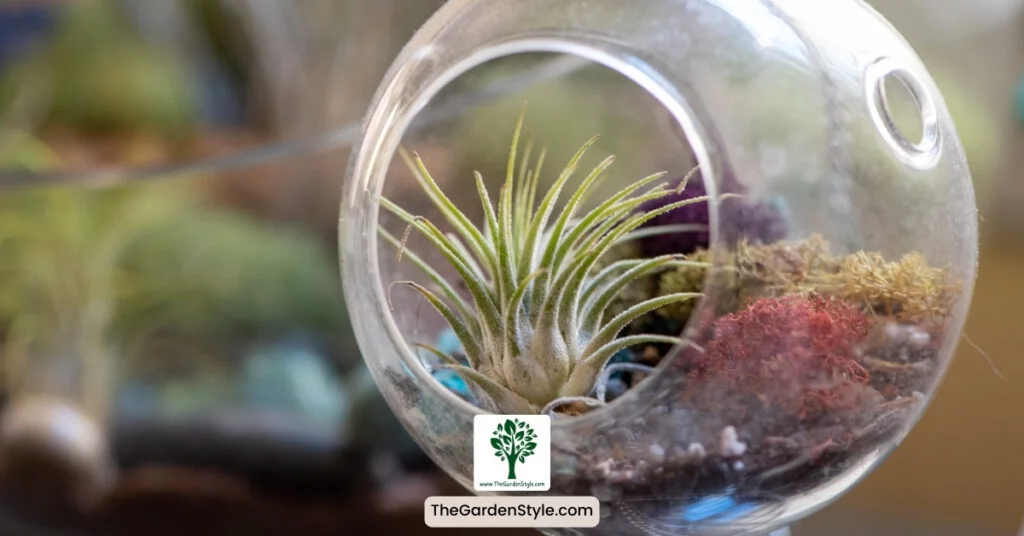
How to Water Air Plants?
As advised by Barbara H. Smith, Horticulture Associate – Agent from Clemson University, the most common and effective method for hydrating your air plants is certainly through soaking. She recommends that about once a week, you should fill a bowl with room temperature water and fully submerge your air plants for a period of 20 to 30 minutes for optimal hydration. After their bath, shake off any excess water and turn them upside down on a towel to ensure they are thoroughly dry, especially in the crevices of the leaves where water can get trapped. That is essential to prevent rot, which air plants are prone to if they remain wet for too long.
Those living in a drier climate or during the hotter periods of the year might need to soak their air plants more frequently. Conversely, in more humid environments or during cooler seasons, you could get by with less frequent soaks.
Misting can supplement soaking, particularly for air plants in drier conditions or for those that prefer higher humidity. It’s a simple method where you spritz your air plants with water several times a week. However, misting should not replace soaking entirely; think of it more as a way to give your plants a little extra hydration between their full water baths.
Another point to consider is the quality of water you use. Air plants are sensitive to chemicals often found in tap water, such as chlorine. Ideally, you should use rainwater, pond water, or filtered water for your soaking sessions. If tap water is your only option, let it sit for 24 hours before use, which allows some of the chemicals to dissipate.
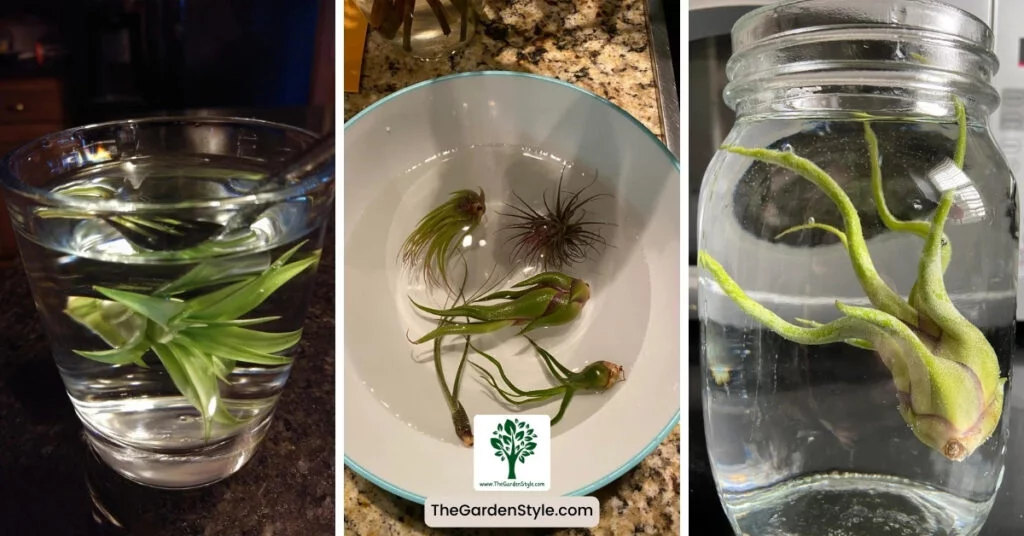
Temperature and Humidity for Air Plants
Creating the right environment for air plants is essential, as they originate from varied climates ranging from tropical rainforests to arid deserts. Let’s delve into the optimal temperature and humidity that will make your air plants feel right at home.
Air plants generally prefer temperatures between 50-90 degrees Fahrenheit (10-32 degrees Celsius). They can tolerate brief dips below this range, but sustained colds can be damaging. Similarly, while they can withstand higher temperatures, it’s essential to ensure they do not become too dry in the heat and to increase watering frequency to compensate.
Humidity plays a critical role in an air plant’s well-being. In their natural settings, most Tillandsia species thrive in moderately high humidity. However, they’ve adapted to endure a wide range, making them quite resilient. Aim for humidity levels between 40-70% for the best growth results. If you live in a drier environment, regular misting can help maintain adequate moisture levels. Conversely, in a humid climate, less frequent watering is needed, but good air circulation becomes important to prevent rot.
Take note that air plants with thinner leaves tend to prefer higher humidity. In contrast, those with thick, succulent-like leaves are more drought-tolerant and thrive in drier conditions. Observing your plants and adjusting their care to their reactions to the environment will keep them thriving.
In homes with central heating or air conditioning, which can dry out the air dramatically, placing a humidifier nearby or grouping your air plants can help to create a microclimate that simulates their natural habitat. Another tip is to place your air plants in rooms that naturally have higher humidity, such as kitchens or bathrooms, provided they also receive sufficient light.
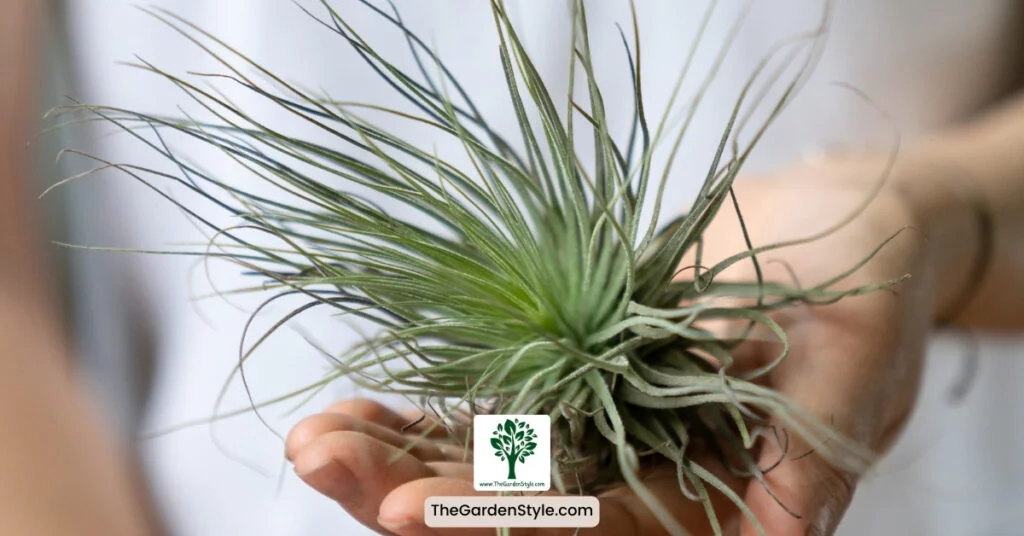
Fertilizer for Air Plants
Feeding air plants is a breeze when you know what they like. These resilient plants don’t ask for much, but a bit of fertilizer can go a long way in boosting their growth and vibrancy. Since air plants absorb nutrients through the leaves, what you are looking for is a foliar fertilizer, which you can apply by misting.
To provide the best care for your air plants, opt for a fertilizer crafted for bromeliads or a balanced, water-soluble variety diluted to one-fourth strength for gentle efficacy. When spring and summer usher in the growth seasons, incorporate this prepared solution into the monthly bathing ritual of your plants, or lightly mist the leaves to impart essential nutrients. With this modest yet targeted feeding approach, you’ll encourage robust leaves and vibrant flowers, beautifully nurturing your air plants’ vitality.
- WONDERFULLY ORGANIC – Contains premium organic ingredients that makes nutrient rich spray perfect to use on all indoor and outdoor airplant types.
How to Propagate Air Plant
As air plants mature, they develop offsets, also known as pups. Propagation is the process of separating these pups from the mother plant and allowing them to grow into new plants. Here are the steps to propagate air plants:
1. Wait for the pups to grow to at least one-third the size of the mother plant. That usually takes a few months, depending on the species.
2. Gently remove the pup from the mother plant. Hold both plants firmly and wiggle the pup back and forth until it comes loose. If it doesn’t come off easily, use a sharp, sterilized knife to cut the pup away from the mother plant.
3. Rinse the pup under running water to remove any debris or dead leaves that may have accumulated.
4. Allow the pup to dry in a well-ventilated area for a few hours.
5. Once the pup is dry, place it in a new container or attach it to a new surface using a small amount of glue or wire. You can also place the pup in a dish of water until it develops roots.
6. Provide the new plant with the same care as the mother plant.
It’s important to note that not all pups will survive, so it’s a good idea to propagate several at once. Propagation is a great way to expand your air plant collection or share your plants with friends and family.
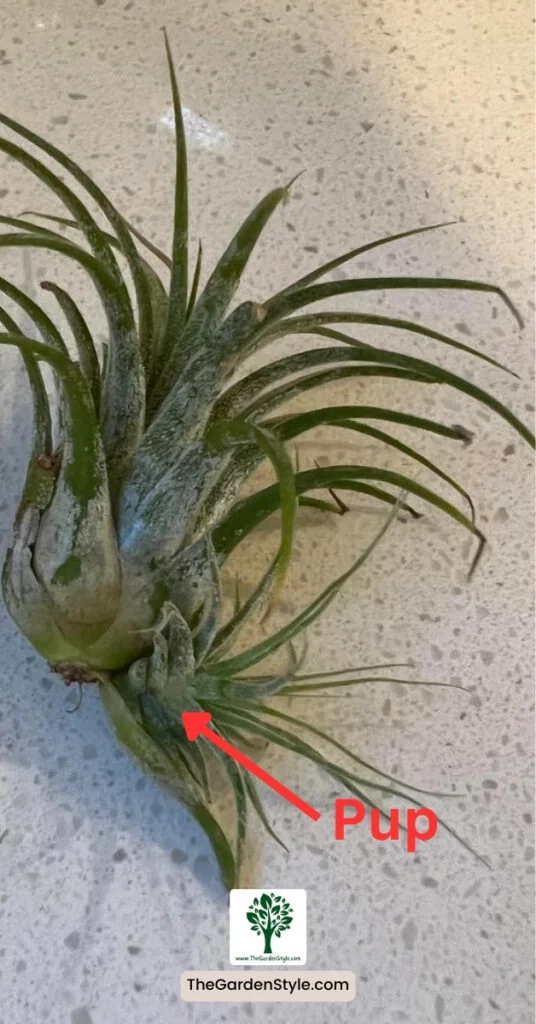
How to Mount an Air Plant
Mounting air plants is an excellent way to display them in your home. There are several ways to mount an air plant, including using a fishing line, wire, or glue.
Using Fishing Line
A fishing line is a great option because it is strong but not visible. Use a clear fishing line so it’s less noticeable. Tie the fishing line around the base of the air plant and then tie the other end to a hook or nail in your wall.
Using Wire
The wire will stay in place better than a fishing line in most cases. Use thin gauge wire so it’s not too noticeable. Wrap the wire around the base of the air plant and then twist the ends together to secure it. You can then use the wire to attach the air plant to a decorative object or hang it from a hook or nail.
Using Glue
You can use glue to attach the air plant to a decorative object or mount it directly onto a wall or other surface. Use a non-toxic glue, like Tilly Tacker or Aleene’s Tacky Glue. Apply a small amount of glue to the base of the air plant and then press it onto the surface you want to mount it on. Hold it in place for a few minutes until the glue dries.
When mounting air plants, it’s important to consider their care needs. Make sure the mounting method you choose allows for proper air circulation and drainage. You don’t want your air plant to sit in water or be too tightly secured.
Mounting air plants is a fun and creative way to display them in your home. With a little bit of creativity and some basic supplies, you can create a beautiful air plant display that will brighten up any room.
Air Plant Care Tips
Caring for air plants is both enjoyable and straightforward. Here are some quick tips to ensure your Tillandsia thrives:
- Light: Provide bright, indirect sunlight or artificial light if natural light is insufficient.
- Watering: Soak your air plants for 20-30 minutes weekly, and shake off excess water to prevent rot.
- Drying: After watering, allow them to dry completely before returning them to their display place.
- Humidity: Aim for 40-70% humidity; mist between soakings if the air is dry.
- Air Circulation: Keep air flowing around your plants to maintain health and prevent disease.
- Temperature: Maintain an environment between 50-90 degrees Fahrenheit (10-32 degrees Celsius).
- Fertilizer: Use a bromeliad or balanced, water-soluble fertilizer at one-fourth strength once a month during spring and summer.
Type of Air Plants
Tillandsia, or air plants, offer a diverse array of forms and sizes that can delight any plant enthusiast. Here are some common types of air plants to consider adding to your collection:
- Tillandsia ionantha: Known for its bright red and purple coloring during bloom, it’s a popular, easily cared-for variety.
- Tillandsia xerographica: The ‘King of Air Plants,’ it boasts wide, silver leaves that curl and spiral, creating a striking rosette.
- Tillandsia caput-medusae: With tentacle-like leaves and an intriguing shape, it’s nicknamed for the mythical Medusa’s head.
- Tillandsia aeranthos: Produces vibrant purple flowers with an upright, clumping growth pattern.
- Tillandsia usneoides: Commonly known as Spanish Moss, it drapes over tree branches in long, silvery strands.
- Tillandsia stricta: Features stiff, green leaves and a compact growth habit, with deep pink to purple blooms.
- Tillandsia cyanea (Pink Quill): Distinctive for its flat, bright pink bracts that fan out like a quill, it’s often grown in pots with supporting media.
- Tillandsia funckiana: When it flowers, it yields a bright, tubular orange-red flower from its needle-like leaves.
- Tillandsia fuchsii var. gracilis: A delicate, smaller variety with fine, fuzzy leaves that spiral gracefully.
- Tillandsia bulbosa: As its name suggests, this type has a bulbous base with tentacle-like leaves, resembling sea creatures.
Recommended reading: Best Indoor Plants: Discover Low-Light Wonders for Stylish Homes
- INCLUDED IN PURCHASE | (8) Live Air Plants of Different Species, Hand Selected. Each plant may vary from pictures shown as plants are hand selected based on season, size, and readiness.
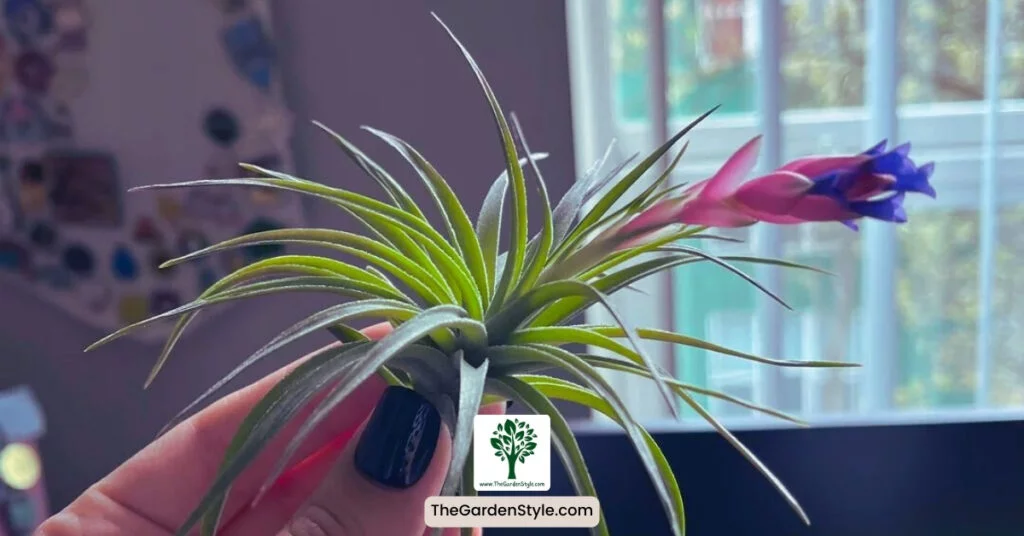
Displaying Air Plants
Air plants, with their unique soil-free lifestyle, offer endless imaginative possibilities for display that go beyond the traditional potted plant aesthetics. To showcase the charming character of your Tillandsia, here are some creative ideas:
- Glass Globes: Hang clear glass terrariums by a window for a floating garden effect. These glass globes are open, and they have holes to ensure good air circulation.
- Driftwood and Bark: Affix air plants onto pieces of wood for a natural, rustic look that mimics their native habitat in the crooks of tree branches.
- Wire Holders: Craft or purchase specially designed wire holders that gently cradle your air plants, providing a minimalistic and modern presentation.
- Ceramic and Pottery: Display them in small, non-porous bowls or quirky pots that match your decor, keeping in mind that no soil is needed.
- Shells and Coral: For a beachy theme, nestle air plants in seashells or coral pieces to evoke the feeling of ocean-side serenity.
- Wall Mounts: Install geometric wall planters or create a living wall art piece featuring air plants in a visually dynamic arrangement.
- Desktop Displays: A simple desk stand or an elegant glass cloche can turn your air plant into an eye-catching piece for your workspace.
Keep in mind that while air plants are versatile, their care requirements remain. Ensure that your display choice accommodates their need for sunlight, air circulation, and proper watering. With creativity and care, your air plants can become not just botanical specimens but integral parts of your interior design.
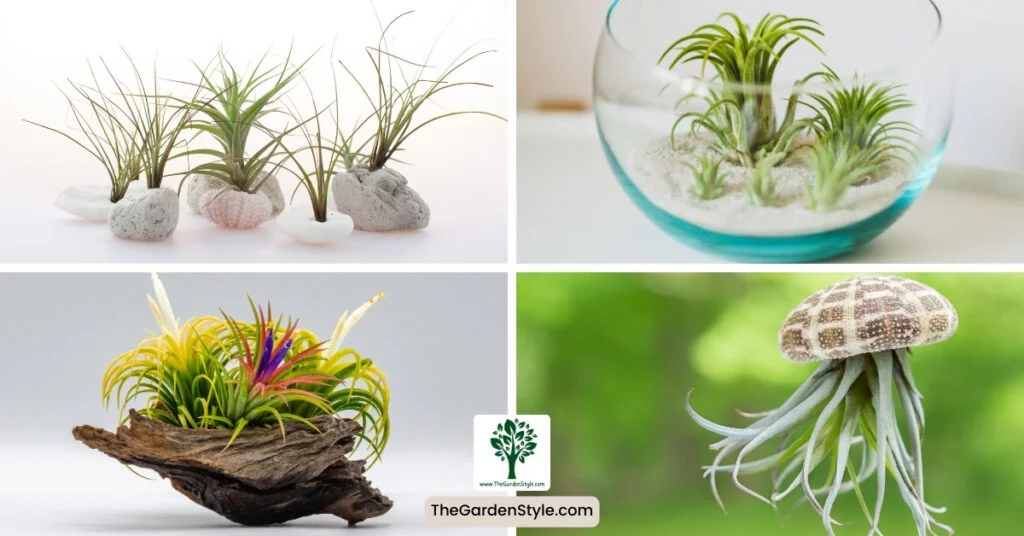
Frequently Asked Questions
Typically, you should soak your air plants once a week for 20-30 minutes. Adjust the frequency based on humidity, temperature, and air circulation in your home.
Yes, air plants can grow in terrariums. Ensure the terrarium is not fully enclosed to allow for air circulation. Avoid glass that magnifies sunlight, leading to excessive heat.
Varieties with dense or fuzzy leaves, like Tillandsia tectorum, are prone to rot if soaked. These types prefer frequent misting or dunking rather than full soaks.
Many air plants produce flowers, including Tillandsia cyanea and Tillandsia ionantha. Flowers can vary in color from bright reds and purples to subtle pinks and yellows, depending on the species.
If this post about how to take care of air plants was helpful, please share it:
